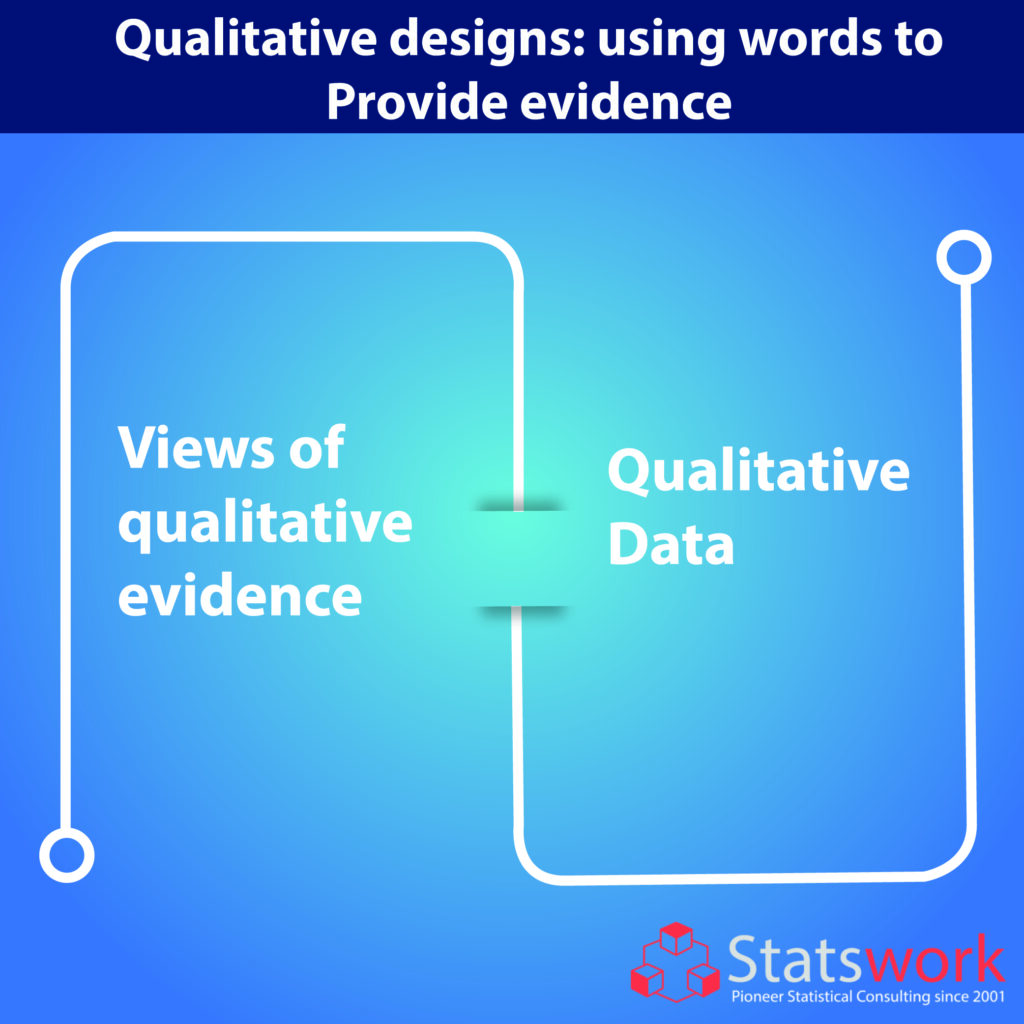Qualitative designs: using words to provide evidence
Introduction
Qualitative research is multimethod and takes an interpretive, naturalistic approach to its topic. This implies qualitative researchers investigate phenomena in their natural surroundings, seeking to understand or interpret occurrences in terms of the meanings individuals assign to them. Case study, personal experience, introspective, life narrative, interview, observational, historical, interactional, and visual texts are examples of empirical materials used in qualitative research to explore regular and complex events and meanings in people’s lives.
Views of qualitative evidence
To begin, there are two questions: (1) What does it mean to have “qualitative” evidence, and (2) how does it fit into qualitative analysis? The first issue necessitates a difference sometimes missed, as previously stated: data are not proof. We may have data, but it is only when (and if) we have a model for when and how something occurs that it becomes evidence. The discovery of such “models,” as we’ll call them, becomes the second question’s response. However, such models are diverse and complicated, making it difficult to define what constitutes evidence precisely, not only in qualitative cases but in all cases.
Qualitative Data
While there is broad agreement among quantitative researchers regarding classification systems—how they are distinguished and what to label them—there is less agreement among qualitative researchers about designs. Quantitative and qualitative worldviews are similar in this regard. Most qualitative researchers agree with Snider’s assessment that numbers are impressive, but they hide far more than they show. They’d also agree with Davis that “excellent qualitative research has equalled, if not exceeded, quantitative research in prestige, significance, and methodological rigour.” A few principles guide most qualitative researchers’ thought and planning processes. The philosophical principles of qualitative inquiry govern qualitative research in all of its complicated designs and data analysis methods: To comprehend complicated phenomena, you must examine the many “realities” that participants encounter—the “insider” views.

Natural settings are ideal for seeing how people build their meanings from events or situations. Quantitative researchers’ pursuit of objective reality is abandoned in favour of the idea that humans create their customised universes. For example, high school dropouts’ experiences, how beginning readers think about comprehension, how an at-risk school became a high-achieving school, what inspired first-generation women college graduates in Appalachia, and how creativity is nurtured in schools are all qualitative inquiry themes. These kinds of questions generate detailed data, even though the sources and formats differ. Interviews, observations, and documents are the most frequent qualitative data sources, none of which can be easily crunched by statistical tools. The use of the term “thick” to describe people’s lived experiences, events, or situations refers to the emphasis on rich detail, meaningful social and historical contexts and experiences, and the importance of emotional content in an effort to open up the word of whoever or whatever is being studied. Finding emergent themes, patterns, concepts, insights, and understandings is the objective of qualitative data analysis. Qualitative research typically uses an analytic framework—a network of linked concepts and categories—to understand an underlying process, such as a sequence of events or structures and how they interact.
References
[1] Suter, W. Newton. “Qualitative data, analysis, and design.” Introduction to educational research: A critical thinking approach 2 (2012): 342-386.
[2] Aspers, P., Corte, U. What is Qualitative in Qualitative Research. Qual Sociol 42, 139–160 (2019). https://doi.org/10.1007/s11133-019-9413-7.


